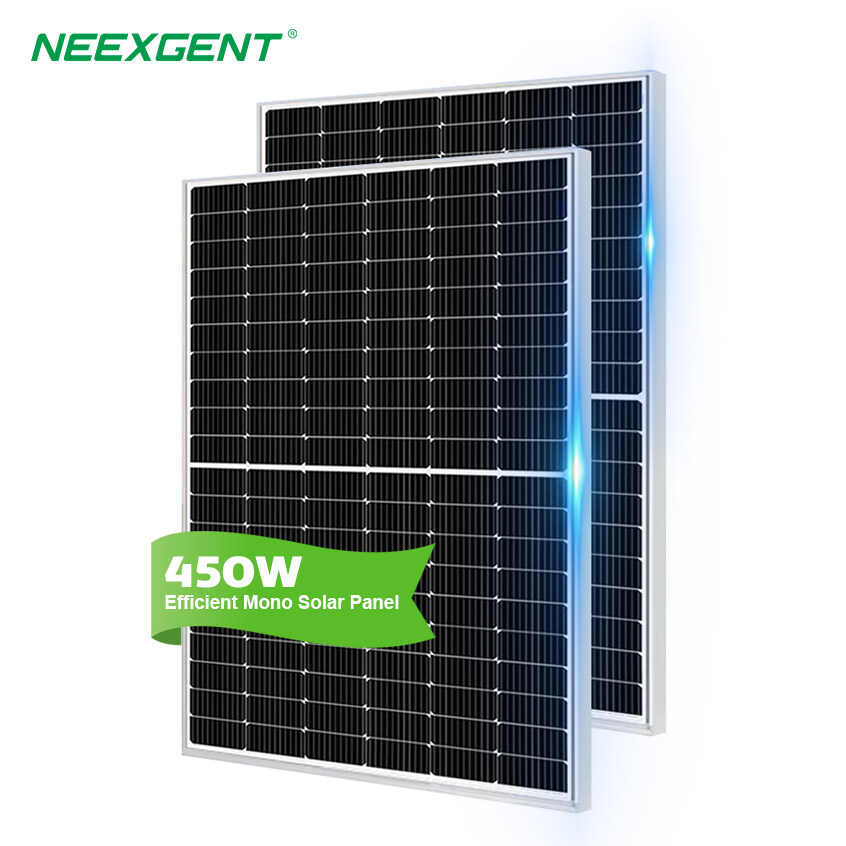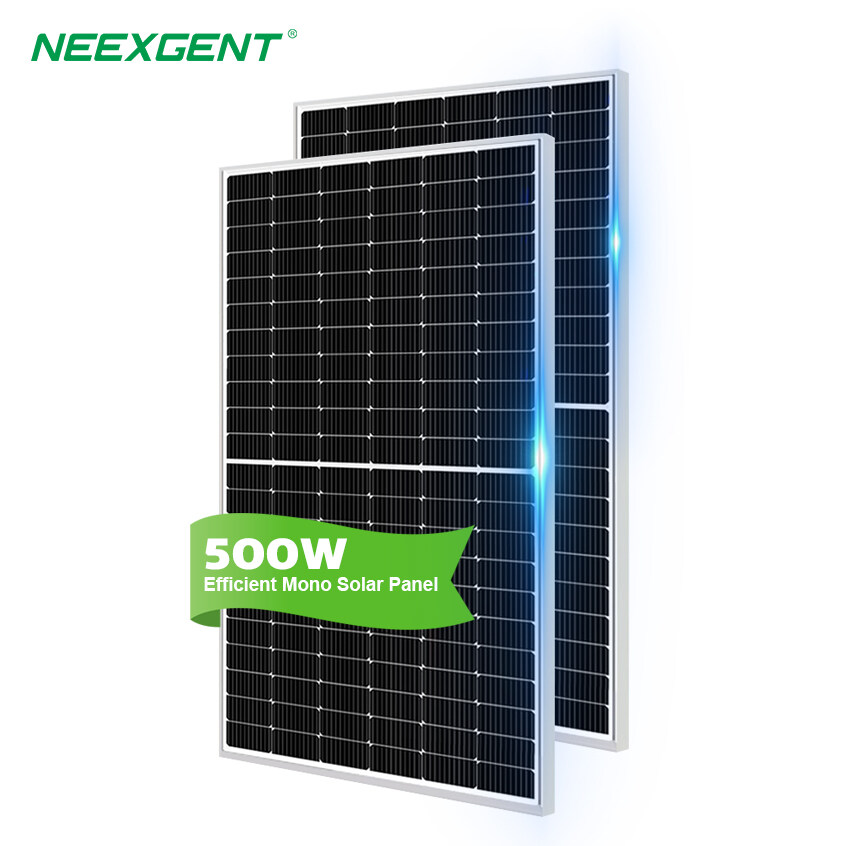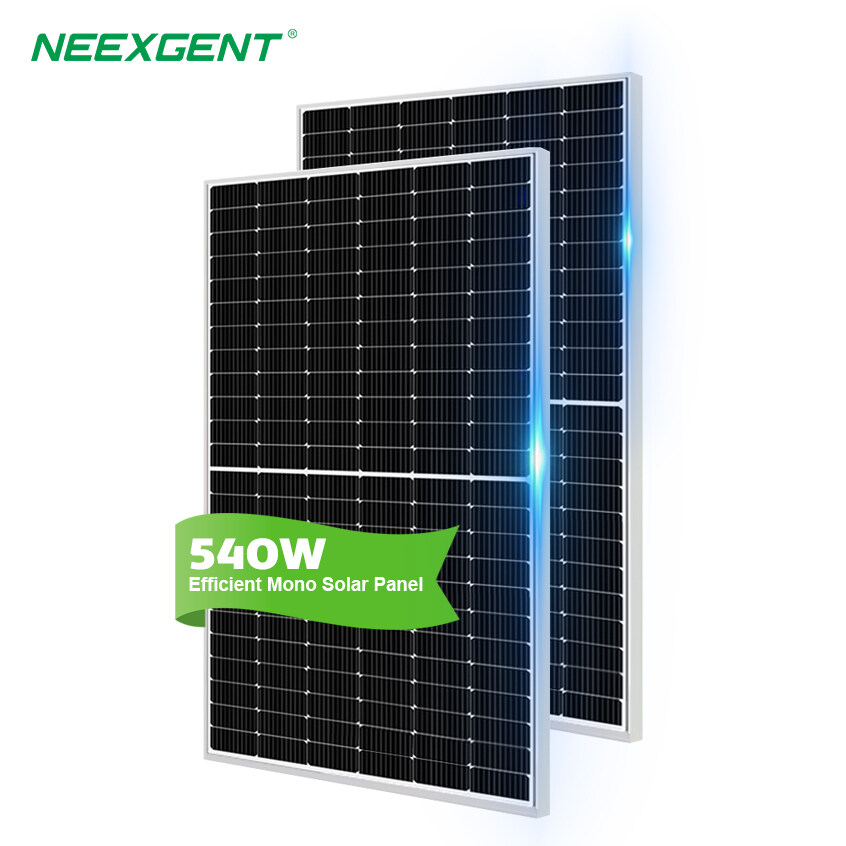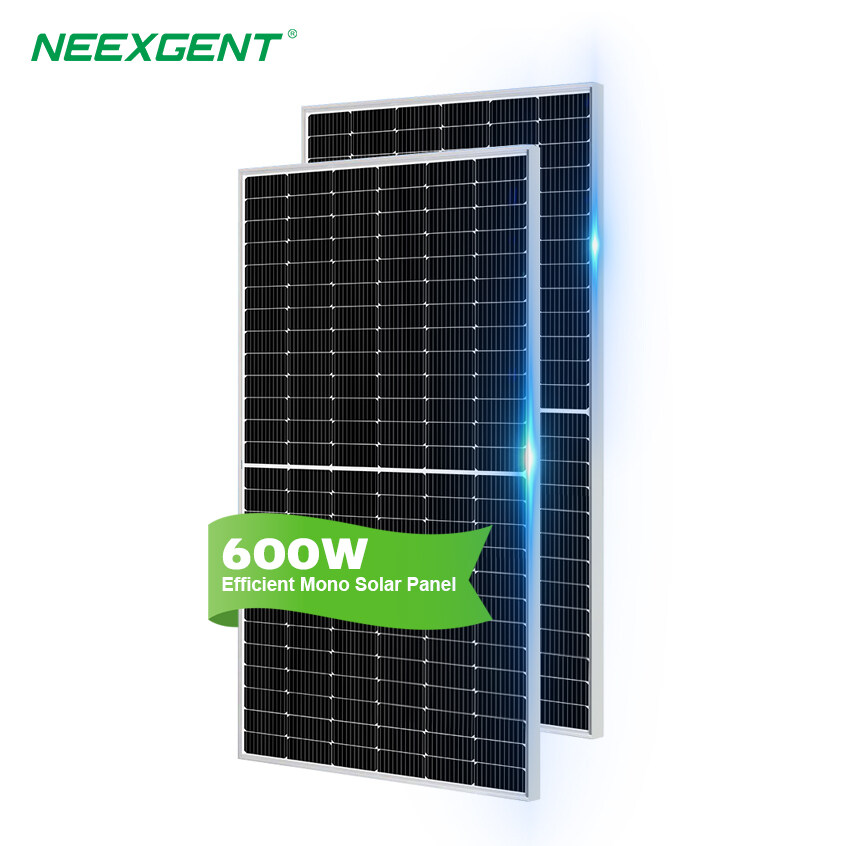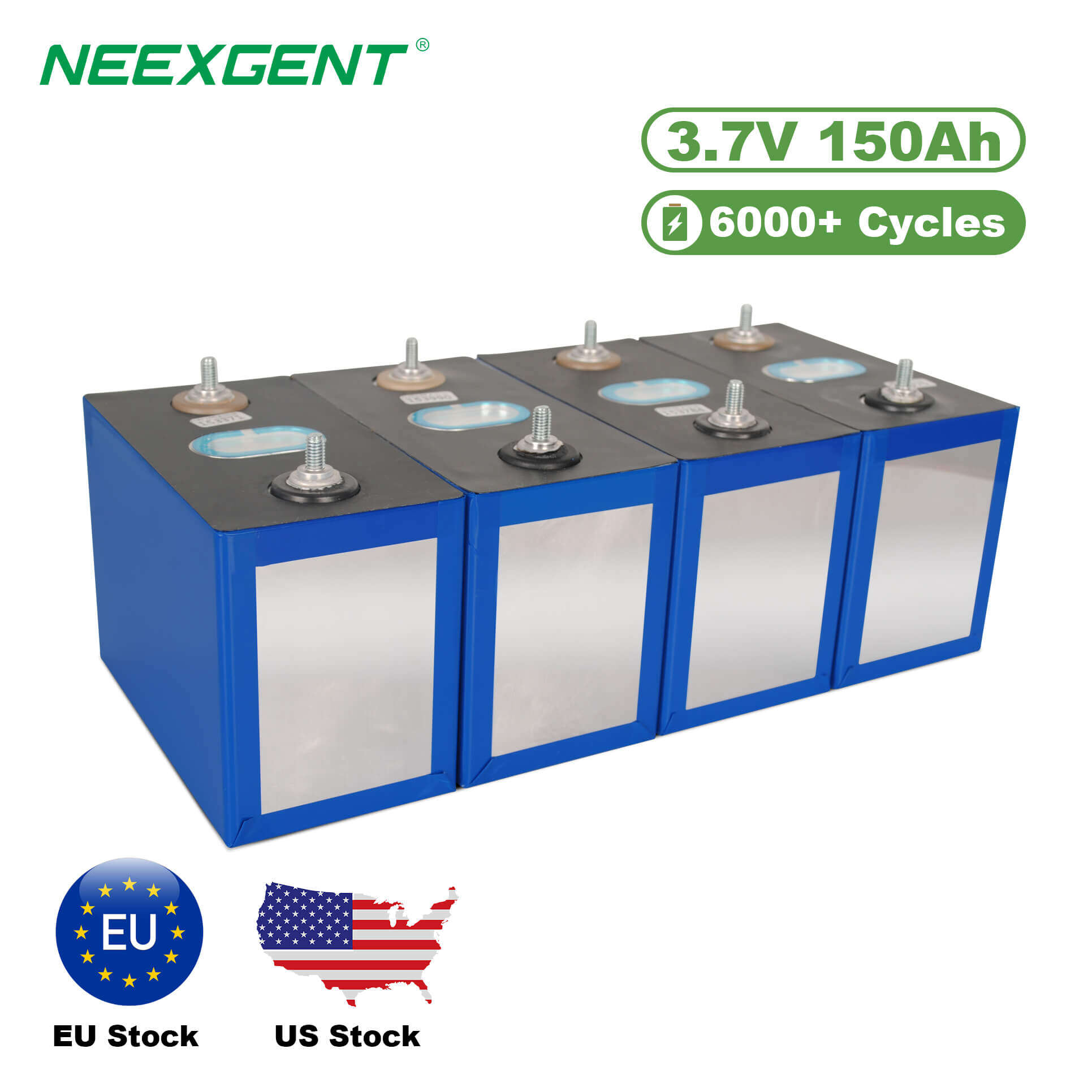Short answer: sometimes—but not always, and not on a fixed schedule for everyone. Whether cleaning is worth your time and money depends on where you live, how your array is mounted, what’s landing on the glass, and how closely you track performance. This article explains the science of “soiling,” the conditions that make cleaning necessary (or not), what returns you can realistically expect, and safe, effective ways to do it when it makes sense.
Contents:
What “soiling” is and how it steals energy

Soiling is the catch-all term for anything that settles on the glass of a photovoltaic (PV) module and blocks or scatters light:
-
Mineral dust and dirt: wind-blown particles, construction dust, farm fields, unpaved roads.
-
Organic debris: pollen, leaves, bird droppings, insect splatter.
-
Urban film: soot, tire microdust, industrial aerosols.
-
Salt spray: near coasts.
-
Snow and frost: seasonal and usually temporary.
PV cells convert sunlight into electricity. Most modern modules have anti-reflective coatings to pass more light, but any layer on top will reduce transmission. The effect isn’t just a clean “percentage off.” Random shading from droppings or heavy spots can force strings of cells to operate at the level of the worst cell in the chain, engaging bypass diodes and causing disproportionate losses. Light dust causes a roughly linear reduction; localized opaque spots can cause nonlinear dips.
How much production does soiling usually cost?
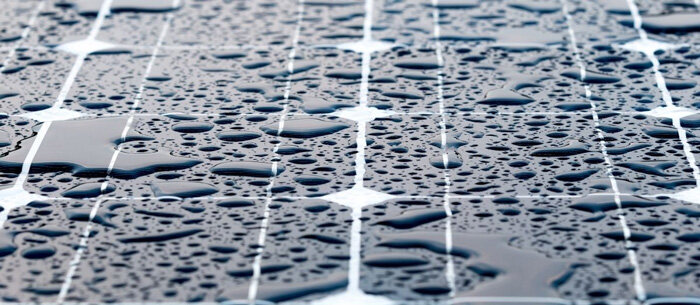
There’s no single number. Studies across climates report average losses from 1–3% in frequently rainy regions, 3–8% in drier suburban settings, and 10%+ in dusty, arid, agricultural, or coastal areas without regular rain. After unusual events—nearby construction, wildfires, dust storms—losses can temporarily spike to 20–30% until the next wash.
A practical rule of thumb:
-
Frequent, soaking rains (non-hard water): Mother Nature does most of the cleaning; residual mineral spotting is modest.
-
Hot, dry summers with rare rain: Dust accumulates; expect gradual month-over-month losses.
-
Pollen season, harvests, or construction next door: Short periods of heavy soiling that justify a one-off clean.
If you track your inverter data, watch for a divergence between expected and actual output under similar weather and sun angles year-over-year. A persistent drop that isn’t explained by temperature, shade growth, equipment faults, or seasonal changes is a soiling clue.
When cleaning is likely worth it
Consider cleaning when one or more of these apply:
-
Measured loss is significant: You see a sustained drop of ~5% or more versus baseline or a clean neighbor array.
-
Local climate is dusty or coastal: Arid inland, farming areas, and sea spray zones accumulate grime faster.
-
Tilt is shallow: Arrays at ≤10–15° tilt shed dust and water poorly; flat commercial roofs and carports are common culprits.
-
Obvious localized obstructions: Bird droppings, leaf mats, or a dripping gutter line across a string.
-
Recent event: Wildfire ash, dust storm, nearby roof work, or tree pollen dump.
-
Snow melt left crust: Melting snow can leave mineral films; a rinse restores clarity.
If none of these are true and you have regular rain, scheduled cleaning may add little or nothing.
A simple cost–benefit check (with numbers)
Let’s run a realistic example so you can translate percentages into dollars.
-
System size: 6 kW residential rooftop
-
Average specific yield: 1,500 kWh/kW/year (sunny climate; adjust down to 1,200 for milder areas)
-
Annual production (clean baseline): 9,000 kWh
-
Electricity value: $0.20/kWh (utility rate or avoided cost)
-
Observed soiling loss: 6% (from data or good estimation)
Lost energy ≈ 9,000 × 0.06 = 540 kWh/year
Lost value ≈ 540 × $0.20 = $108/year
If a professional clean costs $150, doing it once won’t pay back in our example unless the loss is higher or the rate is higher. If you can DIY safely for ~$10 of deionized water and an hour of time, the math flips. If your measured loss is 12%, the lost value is ~$216/year; now a paid clean can make sense.
Break-even soiling (%) ≈ cleaning cost ÷ (annual kWh × $/kWh) × 100
For the example: 150 ÷ (9,000 × 0.20) × 100 ≈ 8.3%
If your measured or likely soiling is below ~8%, and you pay $150 for cleaning, it’s probably not worth doing routinely.
How to tell if you actually have a soiling problem
-
Use data, not vibes: Compare your system’s output to:
-
Your own historical production for the same month last year, adjusted for weather if you can.
-
A trusted performance model (PVWatts or installer’s model).
-
A similar orientation/string on your own roof (east vs. west) to isolate anomalies.
-
Look at clear-sky days: On cloudless, cool mornings with similar sun angles, compare power curves. A flattened peak or lower plateau can indicate soiling.
-
String/inverter comparison: If one MPPT/string lags the others by more than a couple of percent, inspect that area for localized dirt or droppings.
-
Visual inspection: From the ground with binoculars or a zoom lens. Avoid climbing unless you must (and can do so safely).
Do rains clean panels well enough?
Often, yes—but not always. Rain helps in two ways: it loosens and washes. Limitations:
-
Light showers move dust but can leave it redistributed as streaks.
-
Hard water droplets (high mineral content) can evaporate into water spots that scatter light.
-
Low tilt holds puddles; edges dry to grime.
-
Sticky organics (pollen resins, bird droppings) need more than rain.
If your climate delivers periodic soaking rains and your modules have a decent tilt (≥20°), rain may provide 80–95% of the benefit of a manual clean. Where rain is infrequent or panels are nearly flat, manual cleaning carries more value.
Safe, effective cleaning methods
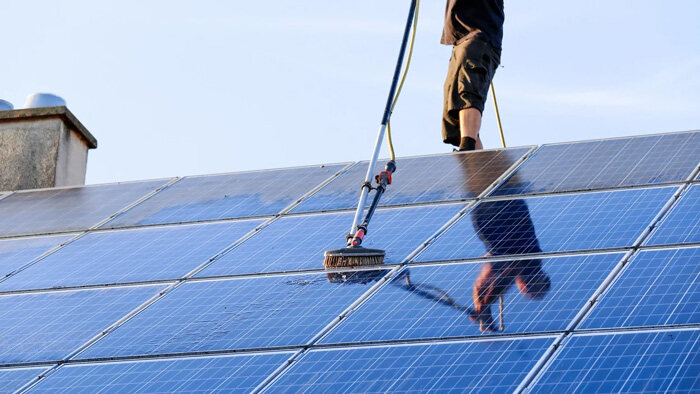
The golden rules
-
Safety first: Roof work is hazardous. If you’re not fully comfortable with heights, fall protection, and slippery surfaces, hire a pro.
-
Cool glass only: Clean in early morning or late afternoon. Cold water on hot glass can stress the laminate; scrubbing hot modules also dries streaks quickly and traps grit.
-
Gentle touch: Think “window,” not “garage floor.” No abrasive pads, no power washers pointed at seals.
DIY approach
-
Rinse with deionized or distilled water if available. Tap water leaves spots; if that’s all you have, follow with a squeegee to remove droplets.
-
Use a soft, non-abrasive brush on a telescoping pole, designed for solar or auto glass.
-
Mild detergent only if needed (a drop of dish soap in a bucket). Avoid solvents, ammonia, and anything waxy.
-
Rinse thoroughly, then air dry or squeegee from top to bottom.
-
Spot-treat droppings by soaking first; let water loosen them. Don’t scrape dry.
Professional services and robots
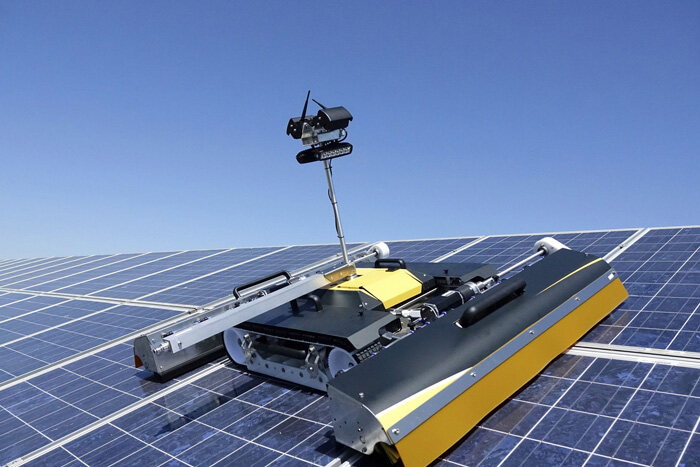
-
Pros bring deionized water systems, long-reach poles, and safety gear. They often work faster with consistent results and lower risk.
-
On commercial sites, robotic cleaners can be scheduled during low irradiance (night) and use little or no water—good for deserts. They make the most sense where soiling rates are high and arrays are large.
What not to do
-
Do not wax or polish modules. Coatings can change optical properties, attract dust, and void warranties.
-
Do not pressure wash at close range or against frame edges; you can force water into junctions or compromise seals.
-
Do not use abrasive powders/pads. Microscratches reduce transmission permanently.
-
Do not step on modules. They’re not designed for point loads; microcracks are invisible but costly.
Frequency: how often should you clean?
There is no universal schedule. Instead, think in triggers:
-
Data trigger: 5–10% sustained performance shortfall not explained by temperature or clouds.
-
Event trigger: After ashfall, dust storm, harvest, or construction.
-
Seasonal trigger: End of heavy pollen season, or after dry summer in arid regions.
-
Visual trigger: Obvious droppings or streak lines across strings.
In rainy, temperate climates, “never” or “as needed” can be perfectly reasonable. In dusty, arid zones, 1–4 times per year (or robotic cleaning) can be justified—validated by measured gains.
Design choices that reduce cleaning needs
-
Adequate tilt: ≥20° sheds water and debris better than flat.
-
Avoid obstacles above arrays: Overhanging trees invite sap and droppings.
-
Good drainage: Modules installed with proper frame orientation and drip edge clearance to prevent dirt damming along the lower frame.
-
Smooth rooftop pathways for access: Makes safe inspections and spot cleaning more feasible.
-
Module selection: Some modules offer anti-soiling coatings; results vary, but in dusty regions they can reduce the rate of accumulation.
Special cases
-
Coastal salt: Salt film is hydrophilic and sticky. Rinse with deionized water more frequently; avoid letting salt bake on for months.
-
Agricultural zones: Harvests kick up residue; a cleaning right after can recover noticeable yield.
-
Industrial/urban soot: Fine particulates create a gray film; rain helps, but periodic rinses prevent spotting.
-
Snow and frost: Usually self-clearing as days warm. Don’t scrape with hard tools; you risk scratches and seal damage. A soft brush is acceptable if you can do it safely from the ground.
-
Bifacial/ground-mount arrays: Rear-side soiling matters too, especially near dusty ground; site gravel or vegetation control can help.
-
Carports and solar canopies: Nearly flat—monitor more closely and plan periodic cleaning.
Warranties, safety, and compliance
-
Read the module and racking manuals. Manufacturers sometimes specify compatible cleaning agents and water pressure limits; violating these can jeopardize warranties.
-
Electrical safety: Do not open junction boxes, disconnects, or connectors. Cleaning is an exterior glass operation only.
-
Fall protection: Use harnesses, anchors, or railings as required by local codes; wet roofs are slippery. If you can’t rig safely—don’t DIY.
Environmental considerations
-
Water use: DI systems conserve water and avoid chemicals. If using tap water, capture runoff where possible and keep detergents minimal.
-
Runoff quality: Avoid washing organic waste into storm drains; a quick pre-wipe of droppings into a bag keeps runoff cleaner.
-
Life-cycle impact: Cleaning that recovers a few percent yield for years can offset its water/energy footprint; the key is to clean only when it actually helps.
Common myths and the reality
-
“Rain always cleans panels completely.” Sometimes, but not for sticky residues or flat arrays, and not where rain leaves mineral spots.
-
“More cleaning is always better.” Beyond the first few percent of gain, extra scrubbing risks scratches and wasted water.
-
“You should use glass cleaner.” Many contain additives that leave films; plain DI water is safer.
-
“Power washing is fine.” It’s risky for seals and labels—avoid.
-
“If one spot is dirty, the whole array is useless.” Modern modules have bypass diodes that mitigate hotspots, but localized heavy soiling on a cell string can still hurt more than its area suggests.

